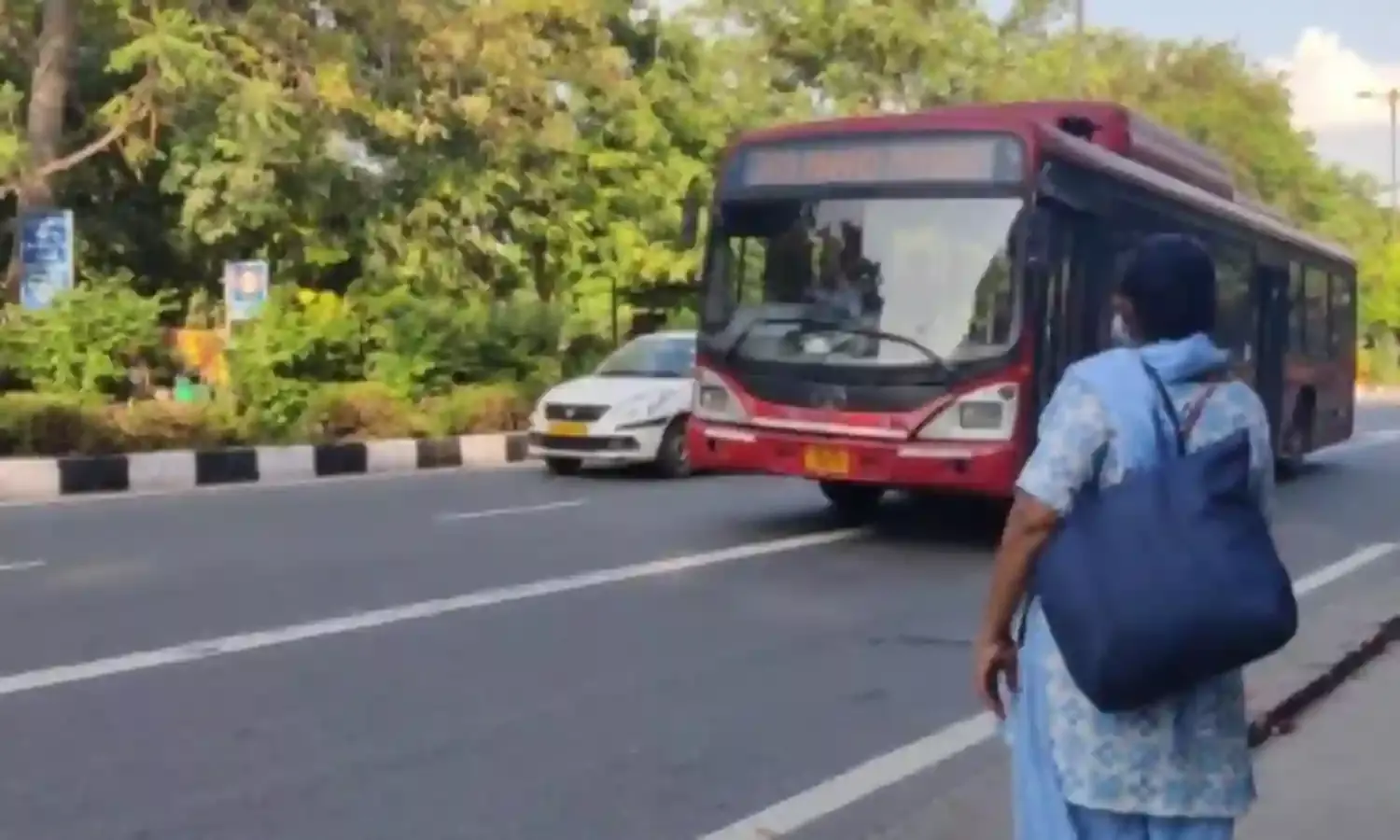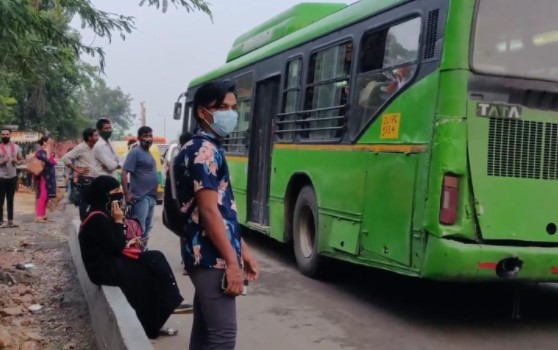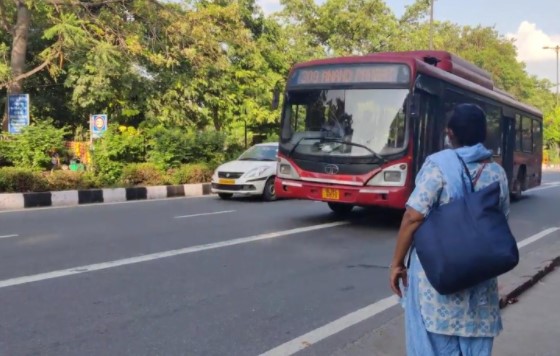'A Lot of Times, They Close the Doors while People are Getting on'
The need for gender responsive mobility planning

Women commuters, who account for a ridership of approximately 44% in the national capital, shared the ordeals of traveling in Delhi Transport Corporation buses. Discrimination against women by bus drivers, delayed services and poor infrastructure at bus shelters were the main problems raised, among basic issues like overcrowded bus stops and poor lighting.
It was back in 2019 that the AAP government introduced a free-ride scheme for women commuters to encourage female mobility. CCTV cameras and panic buttons were installed as a safety measure inside DTC buses. But no measures have so far been taken to ensure women’s safety at bus stops, in a city where women’s safety has been a political and electoral issue.
One of the most common problems that female commuters face on a daily basis, after the government rolled out the free-ride scheme, is the ordeal of getting on the bus. Some of them complain that bus drivers prioritize male passengers over females.
Rizwana, 30, has been traveling in DTC buses since childhood. “A lot of times, bus drivers do not stop the bus for women. Bus drivers and conductors should be sensitized that if they see women standing at the bus stop, when it’s dark and no one’s around, they should stop and take women inside the bus,” she said.
Despite a significant increase in female ridership since the free-ride scheme was launched, the discriminatory behaviour of the bus drivers as they avoid taking free travellers, especially at crowded bus stops, has made it hard for daily commuters.
Kanta, 60, who has been traveling in DTC buses for 30 years said, “Just now I waved at bus no.39 but the bus driver did not stop the bus. They say free mein chadh jaati hain, bus ghumti rehti hain (they get on the bus and wander for free).”
However, Om Kumar, a DTC bus driver would not accept that DTC bus drivers are biased toward their passengers. “Whether it is ladies or gents, for drivers, everyone is equal. Whether they pay or not,” he said.
Kumar added that it was due to Covid seating restrictions that the bus drivers couldn’t take in more people than allowed. But ever since the restriction has been uplifted, things have come back to normal.
DTC bus drivers blame cluster buses for the accidents, unequal treatment of passengers and regular breakdowns of the bus.
However, women commuters said that with or without Covid seating restrictions, they noticed that amid the hustle among people to get on the bus, drivers usually prioritize male passengers as they pay. At times, bus drivers start moving the bus while passengers are still getting on or off.

Amid the tussle between the women commuters and bus drivers, waiting at the bus stop becomes a further challenge for the commuters.
“Sometimes it takes too long for the bus to arrive, it makes us doubt if the bus is going to take this route or not,” says Rizwana.
Many women commuters cannot afford to take the metro or autos in lieu of buses. They have no other option than to wait for the bus.
A DTC driver at the Sukhdev Vihar Depot said requesting anonymity that there is a shortage of bus drivers in the department. “We don’t have enough bus drivers. Now, buses are parked here but we don’t have enough people to refill the CNG. So, ultimately people will have to wait longer,” he explained.
While DTC bus services run every twenty minutes, “Delhi traffic is the reason why bus services get delayed,” said Om Kumar.
With these delays, bus shelters get crowded in no time. “Gents get on, youngsters get on, senior citizens are pushed behind. If we run, there is a high chance of us falling,” says Kanta. “A lot of times, they close the doors while people are getting on.”
The AAP government installed GPS and a Chartr App to track DTC buses in real time. However, commuters said they are not tech savvy to make use of the app. Most female commuters did not know how to use Google Maps.
Unlike the Delhi metro, DTC bus shelters do not have the facility of flashing the next bus’s estimated time of arrival. This leaves the commuters clueless.
Meanwhile many bus stops and bus shelters are dilapidated, have been vandalized or do not exist at all. The question of safety is raised when despite the installation of around 2.1 lakh street lights by the incumbent government, women still come across bus stops with minimal lighting.
“At places, bus shelters have been taken down and it gets dark at night. It's hard to guess if there’s a bus stop there or not,” says Rizwana. “I feel unsafe there.”
Due to the poor condition of the bus shelter, Shanti says that there are times she has to wait for the bus by the side of the road. “It gets congested. We have to stand in the scorching sun and heavy rainfall.”
Om Kumar, who has been with the DTC since 2007 and has working knowledge of almost all the routes, says “There are two types of bus stops, temporary and permanent. The former is poorly built, while the latter has proper infrastructure.”
“When roads are being repaired, traffic police shift the bus stop in the vicinity,” he explains.
Officials at DTC headquarters were unresponsive regarding the issue.
Despite a Delhi High Court order to construct, maintain and renovate its bus shelters in 2019, DTC has done little on the ground. Many bus shelters are still found dilapidated or struck down due to other construction work and never built again.
Concern for women’s safety at bus stops in the national capital with the highest number of crimes, thus, comes into question, once again.



